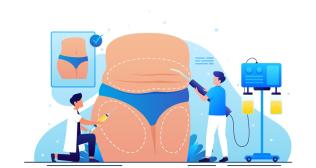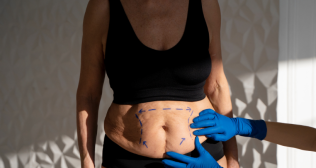
Understanding Gynecomastia: An Overview of Symptoms and Causes
Introduction
Gynecomastia, the benign proliferation of breast tissues in males, is commonly considered asymptomatic as breast tissue development happens in three phases, which is termed the trimodal distribution of incidence. This includes neonatal and pubertal to elderly male individuals where the condition is usually asymptomatic. The prevalence of asymptomatic gynecomastia is significantly high, as it may affect 60–90% of neonates, 50–60% of adolescents, and 70% of the elderly male population aged between 50–69 years. Understanding physiological gynecomastia is essential to differentiate from symptomatic gynecomastia. As in some cases, a related condition known as pseudo gynecomastia, in which fat deposition occurs without glandular proliferation, may be present, particularly in obese men.
Stages of physiological gynecomastia
Neonatal Phase: Immediately after birth, both male and female infants experience breast tissue development due to high oestrogen and progesterone levels from their mothers. This hormone inheritance stimulates breast tissue growth in newborns. Neonatal gynecomastia may persist for several weeks and go away on its own.
Pubertal Phase: In males, the second phase of breast development happens at the time of puberty, where 60% of boys exhibit clinically detectable bilateral gynecomastia by age 14. Pubertal gynecomastia is identified by the development of breast buds in teen boys, which resolves within three years of onset.
Elderly Phase: The third phase occurs in older age (>60 years), where the prevalence of gynecomastia ranges from 36–57%. In some cases
Knowing these phases is crucial for recognising the physiological nature of gynecomastia and distinguishing it from pathological cases. In contrast, the prevalence of symptomatic gynecomastia is low but still warrants clinical attention due to its potential impact on quality of life.
Symptoms
Symptomatic gynecomastia may present several discomforts, leading individuals to seek medical evaluation. Some of these include
- Unusual growth of breasts than normal, and one breast may be different from the other.
- A small lump or fatty tissue may develop under the nipple, which can be tender.
- One or both breasts may be sore, especially over the first few months when gynecomastia starts.
- Nipples may become tender when they rub against the clothes.
- In some cases, the condition may lead to psychological distress due to changes in appearance, impacting self-esteem and confidence. It is important to know that pathologic gynecomastia is usually considered non-cancerous and harmless.
Causes
Breast development in males requires the hormone oestrogen; however, androgens (male hormones) generally tend to prevent a man from developing breasts. In adult males, there is usually a balance between oestrogen and androgens, which inhibits breast tissue from growing. However, if the oestrogen level is increased or when the androgen level is decreased, then there will be an imbalance resulting in gynecomastia.
Increased oestrogen levels stimulate breast tissue growth directly and may also decrease luteinising hormone (LH), resulting in decreased testosterone production by the testes. This further increases the oestrogen-to-androgen ratio even more, promoting breast growth.
In addition to hormonal imbalance, other causes of gynecomastia include
- Use of certain medications such as steroids, antiulcer drugs, antiepileptic medications, anti-depressants, and chemotherapeutic agents
- Presence of underlying conditions such as liver or lung cancer, liver cirrhosis, and hyperthyroidism
- Some families have inherited genes that produce too much oestrogen due to mutations. This causes them to develop gynecomastia and experience rapid growth before puberty
- Alcohol abuse
- Use of narcotics such as marijuana, methamphetamine, and heroin
- Frequent exposure to environmental contaminants with estrogenic properties
Need for awareness
The diagnosis of gynecomastia is often delayed despite well-established causes, as breast tissue may be mistaken for fat deposits, especially in boys who are overweight. As a result, they may attempt to reduce the breast tissue through diet and exercise or simply ignore it for a long time. This lack of awareness about gynecomastia often leads to significant delays in seeking medical advice.
Always consult a surgeon or healthcare advisor for proper diagnosis for any uncertainty. Timely medical intervention can help doctors perform complete physical examinations and advise certain imaging tests to accurately distinguish between fat deposits and breast tissue development.
With advanced medical science, gynecomastia can be treated with minimally invasive surgical procedures with a speedy hospital recovery.
Conclusion
Gynecomastia is a common condition linked with an imbalance in hormone production caused by various factors. With timely recognition of symptoms and prompt medical advice, one can get rid of this condition with suitable medical and surgical treatment options.














